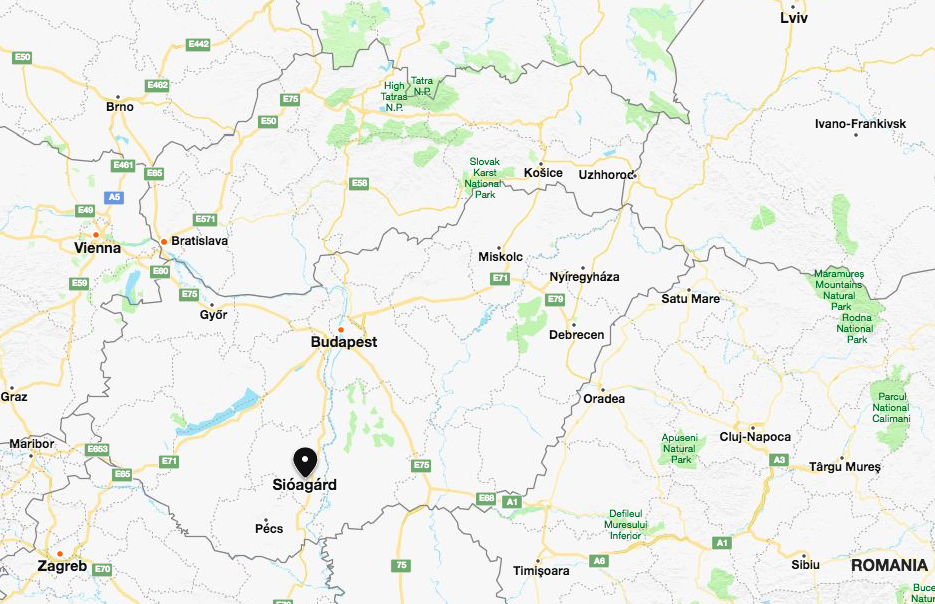Körtánc (koor-TAHNTS) means, literally ‘circle dance’. I doubt that Hungarians would consider this arrangement a dance in its own right, any more than Americans would consider ‘square dance’ a dance. It’s a formation, a vehicle for dancing.
Czompo’s Körtánc – (Sárközi Tanc music)
In 1967 at Folk Dance Camp (Stockton) Andor Czompo presented a Körtánc, which he described as a “girls’ dance’ from Sióagárd….recommended for girls, age 8-12 years.” The printed instructions (below) describe a Taproot dance, or double csárdás, followed by some running steps, to the tune Sárközi Tanc.


Magyars’ Körtánc (Várba Harangoznak music)
In 1981 & 1982, at Folk Dance Camp (Stockton) Kálman and Judith Magyar presented another Körtánc, this one from Nyitra. Wikipedia says “Nitra is the oldest city in Slovakia. The oldest archaeological findings in Nitra are dated to around 25,000-30,000 years ago. The locality has been inhabited in all historical periods in the last 5,000-7,000 years…Several Celtic settlements are known from the 5th-1st centuries…[B.C.-DB] …The first Slavs arrived to Slovakia at the end of the 5th and early 6th century [A,D,-DB]….the highest density of their settlements is documented just in the area of Nitra.[11] As the Avars expanded to the territory of Slovakia in the latter half of the 7th century and early 8th century, the border between Slavic and Slavo-Avaric territory moved toward Nitra.” Slavs got there first, and were often the majority population, but Hungarians controlled the area for several hundred years. By the 1910 census, Nitra was 2/3 Hungarian-speaking. After Austria-Hungary’s loss in World War 1, Nitra reverted to Czecho-slovak rule, and by the 2011 census, Hungarians made up only 2% of the population.

Kálmán Magyar says he ‘arranged’ the dance, meaning he combined a widely distributed choreography having a SSQQS pattern [see https://folkdancefootnotes.org/dance/a-real-folk-dance-what-is-it/1st-generation-dances/childrens-dances-1st-generation-or-living/devojacko-kolo-%d0%b4%d0%b5%d0%b2%d0%be%d1%98%d0%b0%d1%87%d0%ba%d0%be-%d0%ba%d0%be%d0%bb%d0%be-serbian-childrens-dance/] with a well-known Hungarian folk song Várbá Harangoznak.
Várba harangoznak
Várba harangoznak, Városba dobolnak
A gyimesi legények, Táborba indulnak
Nagy a hire…
Ki lesz a kapitány? Majd lesz Jancsó Ignác, Hát a kapitányné?, Majd lesz Réczika Tercsi
Nagy a hire…
Ennek a Tercsinek, Szép selyem szoknyája
Ennek az Ignácnak, Fáj a szíve rája
Nagy a hire…
Ennek az Ignácnak, Szép rojtos gatyája
Ennek a Tercsinek, Fáj a szíve raja
Nagy a hire…
In the castle, bells are ringing
In the castle, bells are ringing, In the town, drums are beating
The boys of Ghymes Are going off to camp
Great is their fame…
Who’ll be the captain? He’ll be Ignác Jáncso
Well then, the captain’s wife? She’ll be Tercsi Réczika<
Great is their fame…
This is Tercsi’s Her pretty silk skirt
This is Ignác’s His heart aches for her
Great is their fame…
This is Ignác’s His handsome fringed pants
This is Tercsi’s Her heart aches for him
Great is their fame…
When Googling Körtánc and Várbá Harangoznak. I find dance videos only outside of Hungary. Many Hungarian sites detail Varba Harangoznak the song. This site, http://csemadok.sk/nepzenei-adatbazis/varba-harangoznak according to my rough Google Translate, says “The melody type is quite widespread in Nitra countryside…György Keré-nyi, the editor of MNT Volume I, has classified this pair as a children’s play song.” In 1980 Kálmán and Judith Magyar produced an LP of Hungarian folk games and dances called Golya, Golya, Gilice, (HR-LP-002), performed by the TEKA Ensemble.. Side A was games, Side B was dances. Várbá Harangoznak was on side A, and was the music he used when teaching Körtánc.

For full lyrics in English, German, and Hungarian, plus sheet music, see See: http://www.folkloretanznoten.de/VarbaHarangoznak.pdf and here:http://www.spielvolk.com/SpilFolk/stammtisch/noten5/Varba%20harangoznak.pdf and: http://csemadok.sk/nepzenei-adatbazis/varba-harangoznak/
